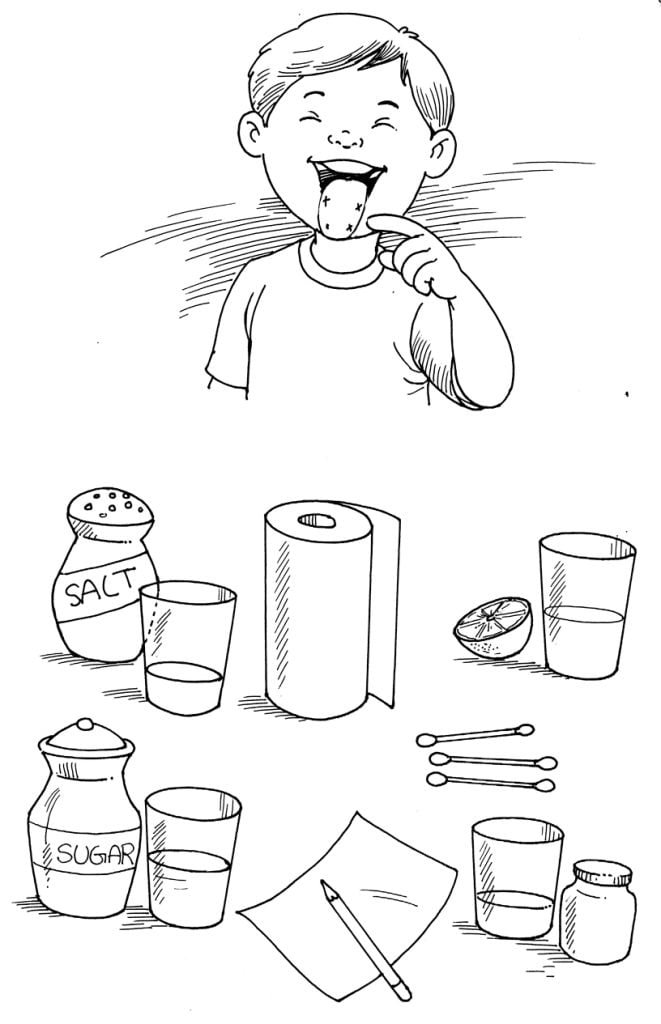
There are millions of tiny bumps on the surface and under the tongue that help us experience various tastes.
Things Required:
Water
2 teaspoonfuls of salt
2 teaspoonfuls of sugar
Aspirin
2 teaspoonfuls of lemon juice
4 cotton swabs or toothpicks with paper towels
Paper towels
Paper and pencil
4 small cups or glasses
Directions:
Place two ounces of water in each cup.
To number 1, add two teaspoonfuls of salt. To number 2 add two teaspoonfuls of sugar. Break up a tablet of aspirin in a spoon and add it to number 3. To number 4, add two teaspoonfuls of lemon juice. Wipe off your tongue with the paper towel or a tissue to get rid of saliva. Dip the cotton swab into number 1 (the salty solution). Shake off any drops of liquid and touch the swab to the middle, edges and back of your tongue. Where was the sensation of saltiness strongest and on which part of your tongue is it? Write down each answer as you test.
Then rinse your mouth with cold water. Dry your tongue and repeat the process with the three other solutions.
This Is What Happens:
You probably sense saltiness and sweetness best at the tip of your tongue. Many people taste bitterness most at the back of the tongue and sourness at the sides.
Science Behind It:
The sensation of taste arises from the activity of the clusters of cells (the epitheliads) that are embedded in the small bumps (the papillae) on the upper surface of the tongue.
The taste buds in these areas contain nerve endings that respond strongly to each particular taste, and they send their messages onto the brain.
